By: Henry A. Giroux
Donald Trump may have startled Republican lawmakers with his sudden and unexpected support for background checks and other gun control measures, but a closer look at his comments to lawmakers reveals his continued adherence to the core of the pro-gun script that he has been following all along.
At his meeting with lawmakers on February 28 Trump buckled down on the idea that the real problem is the existence of gun-free zones, arguing that eliminating gun-free zones «prevent [mass shootings] from ever happening, because [the shooters] are cowards and they’re not going in when they know they’re going to come out dead.»
The president’s repeated efforts to disparage the idea of gun-free zones fit with the earlier call for arming teachers made by Trump and one of his most powerful financial and ideological backers — the dark knight of gun violence, NRA leader Wayne LaPierre. Meanwhile, Trump has shown no interest in preventing school shootings by hiring more guidance teachers, support staff and psychologists. Trump’s call for a comprehensive gun bill may have made for «captivating» television, but it rattled NRA lobbyists and initiated a tsunami of calls to their allies on Capitol Hill. Nothing surprising to this reaction. It gets worse. Chris Cox, the top lobbyist for the NRA, met with Trump a few days after Trump made his remarks and suggested in a tweet that the president had backed away from his apparent embrace of gun control.
Moreover, there is little confidence following Trump’s remarks that Republicans would even remotely endorse legislation for gun control. The NRA «paid $5 million to lobbyists last year» and there is no indication that the time and money spent buying off cowardly politicians will prove ineffectual.
Trump’s proposal to arm teachers suggests that the burden of gun violence and the crimes of the gun industries and politicians should fall on teachers’ shoulders.
The deeply troubling call for eliminating gun-free zones and arming teachers comes at a time when many schools have already been militarized by the presence of police and the increasing criminalization of student behaviors. Suggesting that teachers be armed and turned into potential instruments of violence extends and normalizes the prison as a model for schools and the increasing expansion of the school-to-prison pipeline. What is being left out of this tragedy is that the number of police in schools has doubled in the last decade from 20 percent in 1996 to 43 percent today. Moreover, as more police are put in schools, more and more children are brutalized by them. There is no evidence that putting the police in schools has made them any safer. Instead, more and more young people have criminal records, are being suspended, or expelled from school, all in the name of school safety. As Sam Sinyangwe, the director of the Mapping Police Violence Project, observes:
The data … that does exist … shows that more police in schools leads to more criminalization of students, and especially black and brown students. Every single year, about 70,000 kids are arrested in school…. [Moreover] since 1999, 10,000 additional police officers have been placed at schools, with no impact on violence. Meanwhile, about one million students have been arrested for acts previously punishable by detention or suspension, and black students are three times more likely to be arrested than their white peers.
Trump’s proposal to arm teachers suggests that the burden of gun violence and the crimes of the gun industries and politicians should fall on teachers’ shoulders, foolishly imagining that armed teachers would be able to stop a killer with military grade weapons, and disregarding the risk of teachers shooting other students, staff or faculty in the midst of such a chaotic moment.
In addition, the proposal points to the insidious fact that mass shootings and gun violence have become so normalized in the United States that, as Adam Gopnik points out, «we must now be reassured that, when the person with the AR-15 comes to your kid’s school, there’s a plan to cope with him.» Such statements make visible a society rife with the embrace of force and violence. How else to explain the fact that, at the highest levels of government, horrendous acts of violence, such as mass shootings involving school children, are now discussed in terms of containing their effects rather than eliminating their causes.
Protecting guns and profits have become more important than protecting the lives of young people.
In this logic the underlying causes of mass shootings and gun killings disappear and the emphasis for dealing with such violence reproduces an act of political and moral irresponsibility in its call to curtail or contain such violence rather than address the underlying causes of it.
We live in an age in which the politics of disposability has merged with what Jeffrey St. Clair has called the spectacle of «American Carnage.» The machineries of social death and misery now drive a mode of casino capitalism in which more and more people are considered waste, expendable and excess. The politics of disposability now couples with acts of extreme violence as pressure grows to exclude more and more people from the zones of visibility, justice and compassion. This is especially true for children. Violence against children in the United States has reached epidemic proportions. As Marian Wright Edelman points out,
Pervasive gun violence against children is a uniquely shameful all-American epidemic. Consider that since 1963, over three times more children and teens died from guns on American soil than U.S. soldiers were killed by hostilities in wars abroad. On average 3,426 children and teens — 171 classrooms of 20 children — were killed by guns every year from 1963 to 2016. And gun violence comes on top of other major threats of global violence that threaten our children.
A culture of cruelty, silence and indifference to the needs of children, built on the backs of the conservative media politicians and the gun industry and lobby, has become a central and ethically disturbing feature of American society. This is a culture of political corruption and social abandonment that «has a remarkable tolerance for child slaughter, especially the mass murders of the children of others.» This culture of violence has a long history in the United States, and has become increasingly legitimated under the Trump regime, a regime in which lawlessness and corruption combine to ignore the needs of children, the poor, elderly, sick and vulnerable. In the age of neoliberal brutality, protecting guns and profits have become more important than protecting the lives of young people. As is apparent from its policies, our society no longer views young people as a worthy social investment or the promise of a decent future. On the contrary, as John and Jean Comaroff note in Frontiers of Capital: Ethnographic Reflections on the New Economy, instead of becoming a primary register of the dreams of a society, youth have become «creatures of our nightmares, of our social impossibilities, and our existential angst.»
Viewed largely as a liability, the institutions that young people inhabit have been discarded as citadels of critical thinking and social mobility. As a result, such institutions, including schools, have become zones of social abandonment — often modeled after prisons — that appear to exist in a state of perpetual danger and fear, especially for students marginalized by race and class, for whom violence operates routinely and in multiple ways. Children are now defined largely as consumers, clients and fodder for the military or the school-to-prison pipeline. As a result, their safety is now enmeshed with the weaponized discourse of surveillance, and security personnel and police patrol their corridors. Horrific shootings boost the ratings and profit margins of the mainstream press, undercutting these news outlets’ will and ability to use their resources to address the culture and political economy of violence that now amounts to a form of domestic terrorism in the United States.
The message to students is clear. They are not worth protecting if they threaten the profits of the gun industries and the purses of the politicians who have become the lackeys for them.
As Brad Evans and I have argued in Disposable Futures: The Seduction of Violence in the Age of the Spectacle, violence has now become the defining organizing principle for society in general. It is also worth noting that the spectacle, marketing and commodification of violence powerfully mediates how the American public both understands the relations of power that benefit from the production of violence at all levels of society and how the visceral suffering that is produced can be neutralized in a culture of immediacy and «alternative facts.»
Of course, this logic is part of the politics of distraction that has become a trademark of the Trump administration. At the same time, it creates more profits for the gun industries and makes clear that most people, including children, have no safe space in the US. The message to students is clear. They are not worth protecting if they threaten the profits of the gun industries and the purses of the politicians who have become the lackeys for them. It gets worse. Rather than engage young people and other gun rights advocates in a debate about gun control, some conservatives mimic the discourse of humiliation and lies used relentlessly by Trump in claiming that «bereaved students were being manipulated by sinister forces, or even that they were paid actors.»
As objects of moral and social abandonment, young people are beginning to recognize that the response to their call for safety, well-being and future without fear is cruel and cynical. In addition, their struggle against gun violence makes clear that the Trump administration, the NRA, and the industries that trade in instruments of violence and death, are waging a war against democracy itself. The call to arm teachers also speaks to the Trump administration’s efforts to further militarize and expand the weaponization not only of the armed forces but also of spaces in which large numbers of students congregate. In his call to arm 20 percent of all teachers, Trump is suggesting that 640,000 teachers be trained and given guns. The Washington Post estimates that the costs of training teachers sufficiently could reach as high as $718 million while the cost of providing teachers with firearms could amount to an additional $251 million. According to the Post, «the full-price, more expansive training and the full-price firearm … creeps past $1 billion.» Furthermore, putting 640,000 more guns in schools is not only a reckless suggestion, it also further enriches the profits of gun makers by adding millions of dollars to their bottom line. Why not invest this amount of money in providing support staff and services for students — services that could meaningfully support those facing mental health issues, bullying, homelessness and poverty?
When combined with a culture of fear and a massive government investment in a carceral state, the politics of disposability eerily echoes the damaging legacy of a fascist past in the US, with its celebration of violence, concentration of power in the hands of the few, massive inequities in wealth and militarization of all aspects of society. There is no defense for weapons of war to be sold as commodities either to children or anyone else. Gun violence in the US is not simply about a growing culture of violence, it is about the emergence of a form of domestic terrorism in which fear, mistrust, lies, corruption and financial gain become more important than the values, social relations and institutions that write children into the script of democracy and give them hope for a decent future.
When the only self available to the public is rooted in the discourse of entrepreneurship, it is not surprising for a society to produce generations of people indifferent to the effects of mass violence.
A war culture now permeates American society — extending from sports events and Hollywood films to the ongoing militarization of the police and the criminalization of everyday behaviors such as violating a dress code or doodling on a desk. War has become a permanent element of everyday life, deeply etched into our national ideals and social relations. And those responsible for the bloodshed it produces appear immune from social criticism and policies that limit their power.
This debate about school shootings is not simply about gun violence; it is about a neoliberal order that has tipped over into authoritarianism, one for which the highest measure of how a society judges itself ethically and politically is no longer about how it treats its children. Violence on a grand scale certainly has produced a high sense of moral outrage within the US public at times, but not over the fate of young people.
People in the US need a new language to talk about violence in order to capture its many registers and the threads that tie them together. Under such circumstances, school violence cannot be understood outside of the deeply inordinate influence of money and power in US politics. The call to model schools after prisons would have to be examined against the rise of the punishing state and the Trump administration’s celebration of a «law and order» regime. The anger fueling what might be called white rage would have to be analyzed against the gutting of jobs, wages, pensions, health care benefits and the massive growth of inequality in wealth and power in the United States.
US society has become an abyss in which violence, disposability and the logic of social abandonment and terminal exclusion work against the interests of most children and for the interests of the rich and powerful. Weapons now operate in the service of what might be called the necro-power of casino capitalism. How else to explain the fact that there are more than 13,000 homicides a year in the United States, or that on average, seven teens are killed with guns daily. Yet the response on the part of politicians is either silence and inaction, or a more aggressive push to put more guns in circulation?
A cult of militarism has dragged extreme violence into the very soul of the US and has become a source of pride rather than alarm and anger. This depraved transformation is accelerated by a crisis of agency in which every relation is reduced to an exchange relation, one in which, as political theorist Wendy Brown has argued, «everything from learning to eating become matters of speculative investments — ranked, rated, balanced in your portfolio.» When the only self available to the public is rooted in the discourse of entrepreneurship, it is not surprising for a society to produce generations of people indifferent to the effects of mass violence, unsympathetic to the growing multitudes of disposable individuals and groups, and unmoved by a culture of deepening collective cynicism. Casino capitalism has numbed large segments of the American public into moral and political callousness. One consequence is an indifference to a society in which the killing of children is routine.
Mass shootings and gun violence in the US cannot be abstracted from what I call the death of the social, which involves the collapse of an investment in the public good, the ongoing destruction of democratic values, and the undermining of the common good. A toxic mix of rugged individualism, untrammeled self-interest, privatization, commodification and culture of fear now shapes American society, leaving most people isolated, unaware of the broader systemic forces shaping their lives, and trapped in a landscape of uncertainty and precarity that makes them vulnerable to having their anxieties, anger and rage misdirected.
The students from Parkland, Florida, are fighting back, embracing new forms of social solidarity and collective struggle.
All too often, the only discourse available for them to deal with their problems is provided by the disingenuous vocabulary of fear and security delivered in the call for gun ownership, the allure of violence as an antidote to their individual and collective anxieties, and a hateful appeal to racism, Islamophobia and demonization.
The hijacking of freedom and individual responsibility by extremists is corrosive and rots society from within, making people susceptible to what C.W. Mills describes as «organized irresponsibility» in his book The Politics of Truth. The right-wing attack on the welfare state, community and democracy functions to dissolve crucial solidarities and bonds of social obligation, and undermines mutual responsibilities. In the absence of the discourse of community, compassion and mutual respect, fear and violence have become the new currency mediating social relations at all levels of society. In a society in which the war of all against all prevails, the call for more guns is symptomatic of the shredding of the social fabric, the hardening of society, the evisceration of public trust, and a ratcheting up of a political and economic investment by the ruling elite in the machinery of cruelty, inequality and militarism.
Violence in the United States is part of a wider politics of disposability in which the machineries of social and political death accelerate the suffering, hardships and misery of children. For too long, youth have been written out of the script of justice and democracy. Gun violence, mass shootings and state violence are simply the most visible elements of a society that organizes almost every aspect of civil society for the production of terror and fear, and which views young people within the specter of uselessness and indifference.
Fortunately, the students from Parkland, Florida, are fighting back, shunning the coarse language used by apologists for systemic violence while embracing new forms of social solidarity and collective struggle. These young people are refusing to privatize hope or allow the ethical imagination and their sense of moral outrage and social responsibility to be tranquilized. They are not only outraged over the brutal actions of the defenders of gun violence, they feel betrayed. Betrayed, because they have learned that the power of the gun industries and the politicians who defend them do not consider their lives worthy of protection, hope and a future free of violence. They recognize that US society is unusually violent and that they are a target. Moreover, they are arguing convincingly that mass shooting in the United States have a direct correlation with the astronomical number of guns present in this country. But there is more at stake here than an epidemic of gun violence, there is the central idea of the US as defined by carnage — violence that extends from the genocide of Native Americans and slavery to the rise of mass incarceration and the instances of state violence now sweeping across the US.
At least for the moment, young people are refusing to live with a modern system of violence that functions as a form of domestic terrorism. Engaged in a form of productive unsettling and collective dissent, they are fighting back, holding power accountable and giving birth to a vibrant form of political struggle. The distinctiveness of this generation of survivors is clear in their use of social media, their willingness to speak out, their planned marches, their civic courage, and their unwillingness to continue to live with the fear and insecurity that have shaped most of their lives. Hopefully, this moment will transform itself into a movement.
Source:
http://www.truth-out.org/news/item/43732-killing-children-in-the-age-of-disposability-the-parkland-shooting-was-about-more-than-gun-violence
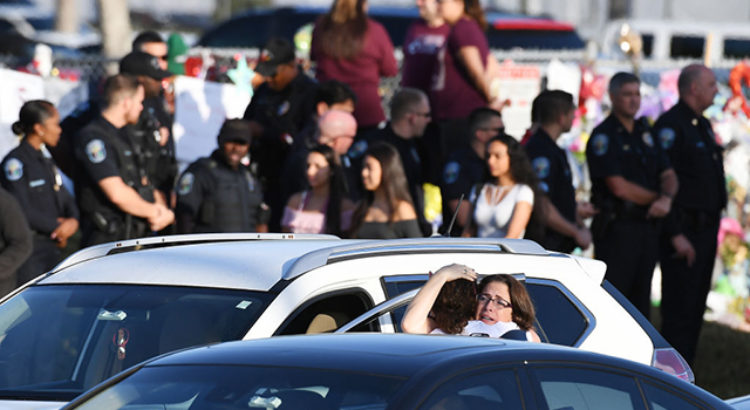
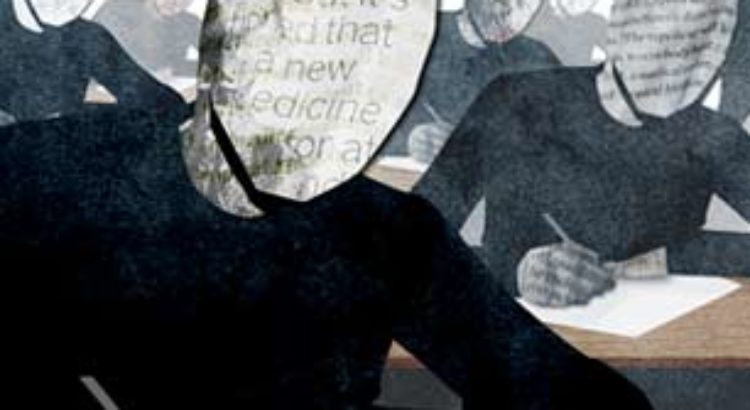

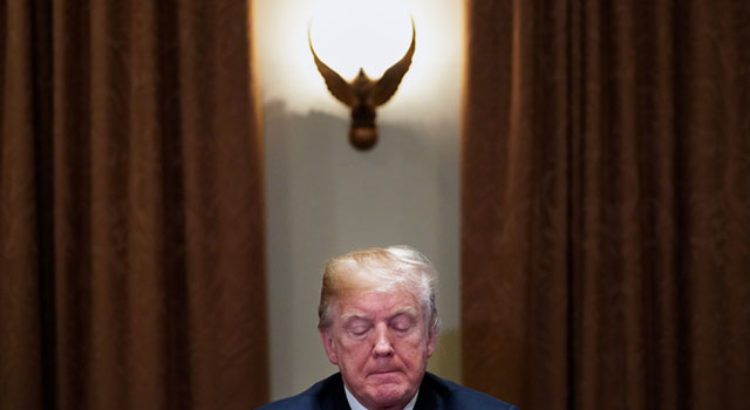

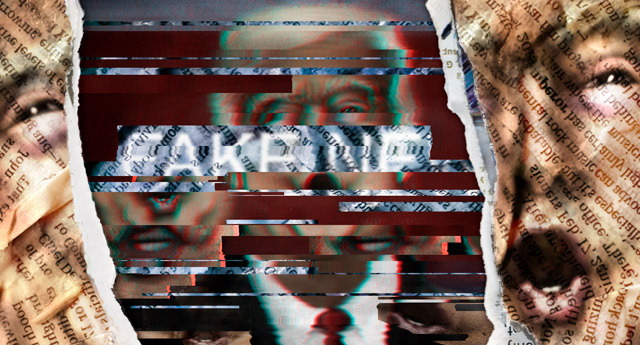
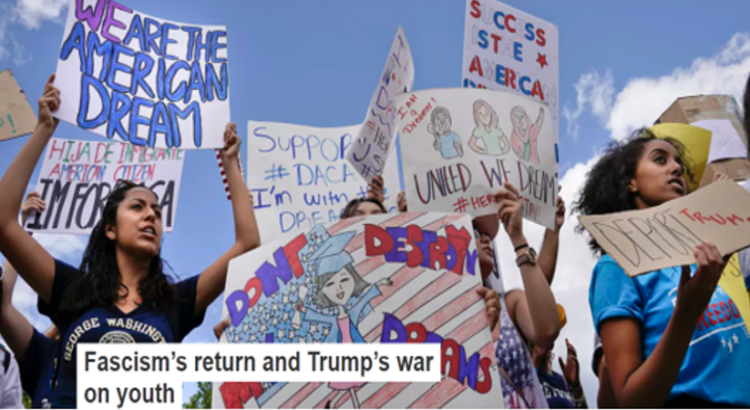
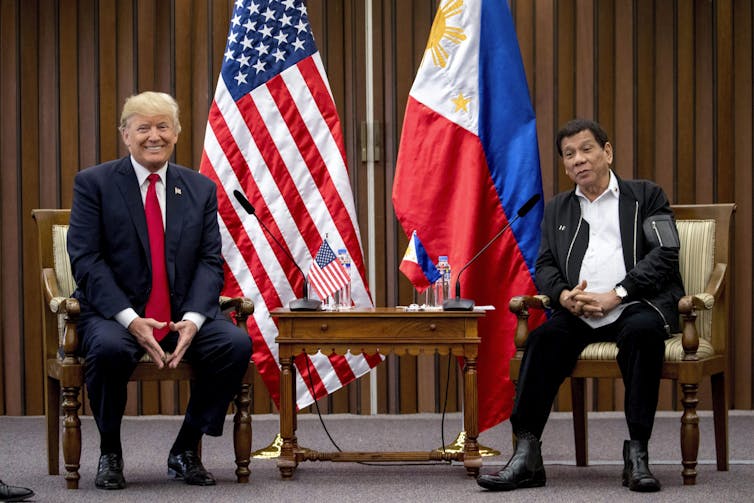
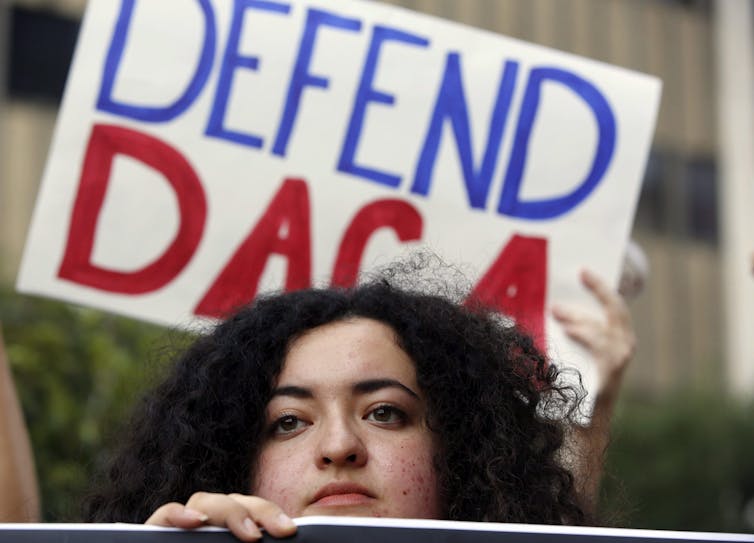







 Users Today : 5
Users Today : 5 Total Users : 35460497
Total Users : 35460497 Views Today : 21
Views Today : 21 Total views : 3419379
Total views : 3419379